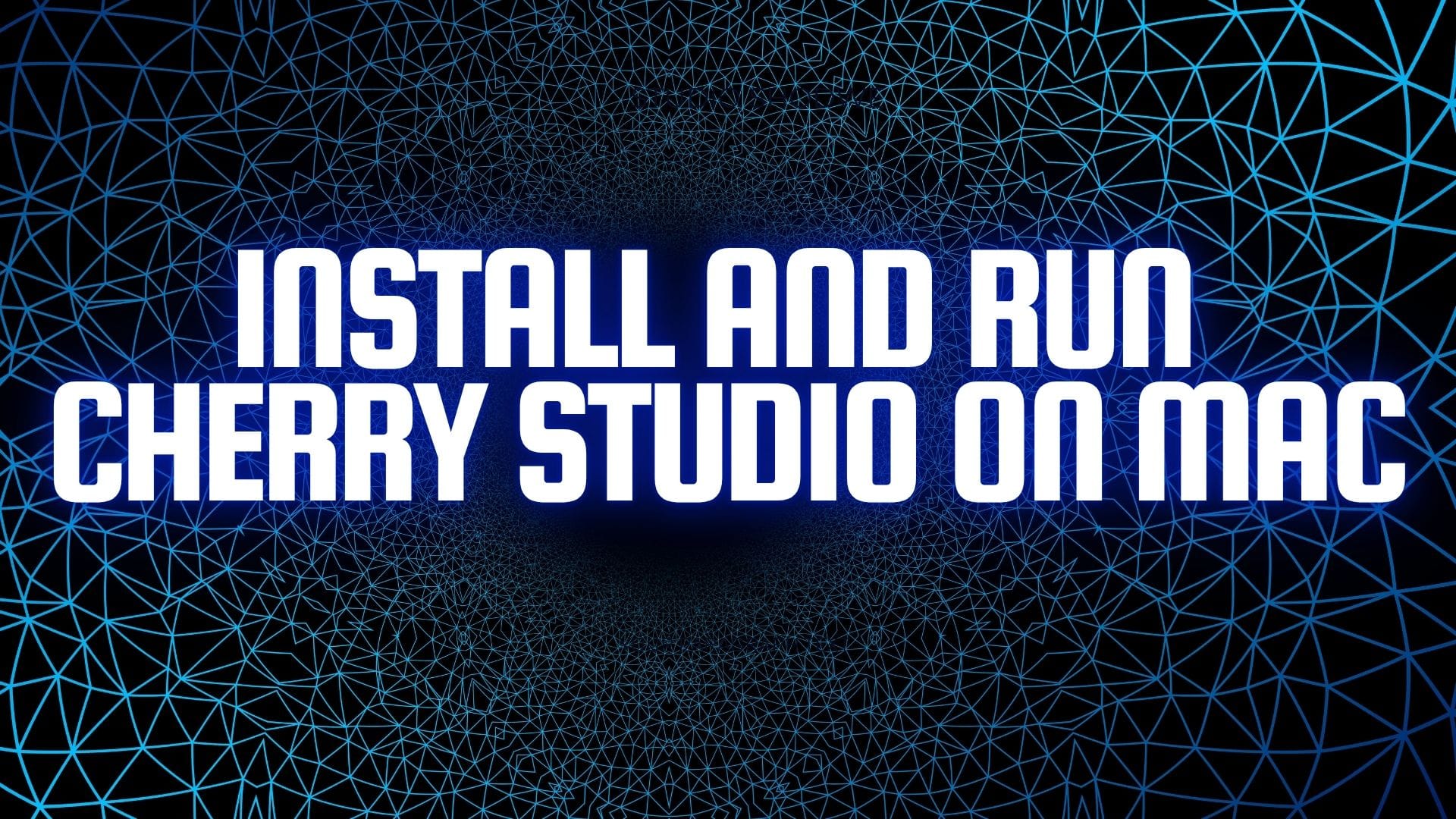Install and Run Cherry Studio on Mac

Cherry Studio is a powerful, cross-platform AI productivity desktop client built for seamless interaction with a wide array of large language models (LLMs) and AI web services. Whether you're a developer, writer, researcher, or tech enthusiast, Cherry Studio provides a unified interface to supercharge your workflow on macOS, Windows, or Linux.
This guide walks you through installing, configuring, and using Cherry Studio on a Mac—complete with setup tips, advanced features, and troubleshooting advice.
What is Cherry Studio?
Cherry Studio offers an all-in-one desktop environment for AI interactions. Its key features include:
- Multi-model support: Connect to OpenAI, Gemini, Anthropic, Claude, Perplexity, Poe, and more.
- Local models: Run models locally using Ollama.
- 300+ built-in AI assistants: Customize or create your own.
- Robust document handling: Process text, images, PDFs, Office files, and more.
- File management: Backup and manage with built-in WebDAV support.
- Visualization tools: Render Mermaid charts.
- Code syntax highlighting: Ideal for developers.
- Advanced UI features: Global search, theme switching, and content sharing.
Cherry Studio requires no complex environment setup and supports both light and dark themes.
System Requirements
Ensure your Mac meets the following prerequisites before installation:
- macOS version: macOS 11 (Big Sur) or later
- Processor: Supports both Intel and Apple Silicon (M1/M2/M3) chips
- Disk space: Several hundred MB for the app; more for storing local models or files
Step 1: Identify Your Mac’s Chip Type
Cherry Studio provides different installers for Intel and Apple Silicon Macs. To find your chip type:
- Click the Apple logo in the top-left corner.
- Select “About This Mac.”
- Check the processor:
- Intel: Download the Intel version.
- Apple M1/M2/M3: Download the Apple Silicon version.
Step 2: Download Cherry Studio for Mac
Option A: Official Website
- Visit the Cherry Studio official website or documentation.
- Choose the appropriate installer for your architecture:
- Intel (x64)
- Apple Silicon (ARM64)
Prefer official download links for the latest secure versions.
Option B: Install via Homebrew
If you use Homebrew, install Cherry Studio via terminal:
brew install --cask cherry-studio
This method auto-detects your chip type and simplifies future updates.
Step 3: Install Cherry Studio
Manual Installation (DMG File)
- Open the downloaded
.dmgfile. - Drag the Cherry Studio icon into the Applications folder.
- Eject the disk image after installation.
Verify Installation
- Go to Applications and launch Cherry Studio.
- If macOS blocks it, right-click the app and choose Open to bypass Gatekeeper.
Step 4: Initial Setup and Configuration
Launch Cherry Studio
Open the app from Applications or Launchpad. A welcome screen or dashboard should appear.
Add Model Providers
To connect with AI services:
- Navigate to Settings → Model Providers.
- Add your desired providers:
- Name (e.g., “OpenAI”)
- Provider type
- API Key (from the provider's website)
- Optional API Host (e.g.,
https://chat.d.run)
- Save the configuration.
Cherry Studio will detect and list the available models for easy switching.
Step 5: Using Cherry Studio
Choose or Create an AI Assistant
- Use one of 300+ built-in assistants or create your own tailored to writing, coding, translation, research, and more.
Start a Conversation
- Enter your prompt.
- Select a model (e.g., GPT-4, Claude, Gemini).
- Cherry Studio supports multi-model conversations in a single thread.
Document and File Handling
- Drag and drop files including PDFs, Word documents, or images.
- Use AI to summarize, translate, or analyze content.
Code and Visualization
- Write and visualize code with syntax highlighting and Mermaid chart rendering.
File Management and Backup
- Use integrated WebDAV for backup and organization.
UI Customization
- Toggle between light and dark themes.
- Customize window opacity and layout.
Step 6: Advanced Features
- Global Search: Search across all conversations and files.
- Drag-and-Drop Sorting: Organize assistants, models, and settings.
- Content Sharing: Share generated outputs directly from the app.
- Mini-Programs: Extend functionality with built-in plugins and extensions.
Step 7: Troubleshooting
Check Console for Errors
To investigate bugs or API issues:
- Focus on the Cherry Studio window.
- Press
Command + Option + Ito open the developer console. - Go to the Network tab.
- Look for red “×” marks (e.g., failed
completions). - Check the Response tab for error details.
For help, screenshot the console and contact support.
Common Issues
- App not opening: Use right-click → Open to bypass security blocks.
- Model errors: Double-check your API key and endpoint.
- Update problems: Reinstall from the latest release or use Homebrew.
Step 8: Keeping Cherry Studio Updated
- Manual: Download updates from the official website.
- Homebrew: Run the command:
brew upgrade --cask cherry-studio
Summary Table: Installing Cherry Studio on macOS
| Step | Action |
|---|---|
| Identify Chip | Determine Intel or Apple Silicon |
| Download | Get installer from website or install via Homebrew |
| Install | Drag to Applications or use brew install --cask cherry-studio |
| Launch | Open from Applications or Launchpad |
| Configure | Add your model providers and API keys |
| Use | Chat with assistants, process files, visualize content |
| Troubleshoot | Use console (Cmd + Opt + I) for debugging |
| Update | Use latest installer or run brew upgrade --cask cherry-studio |
Conclusion
Cherry Studio empowers Mac users with an intuitive interface to harness the capabilities of modern AI models—both local and cloud-based. With easy installation, wide model support, and a wealth of productivity tools, it’s a top-tier choice for anyone integrating AI into their daily workflow.